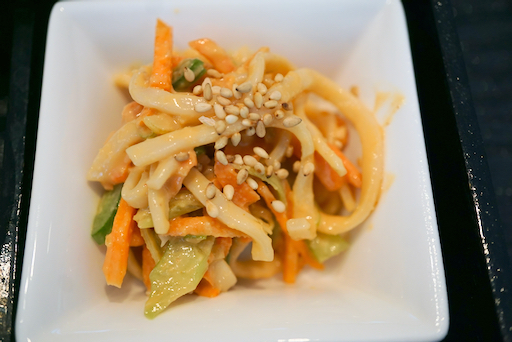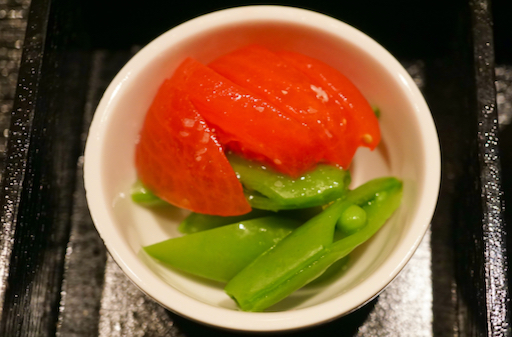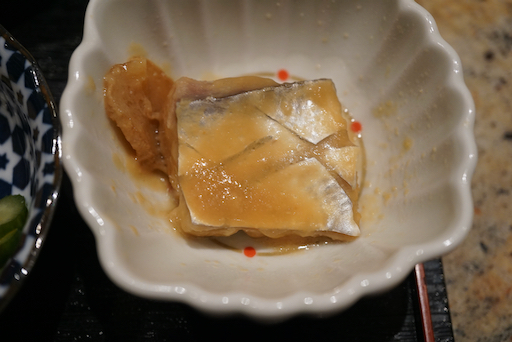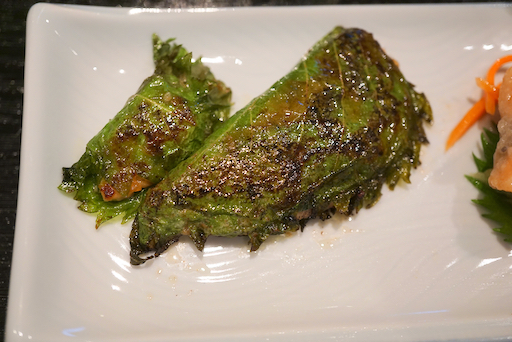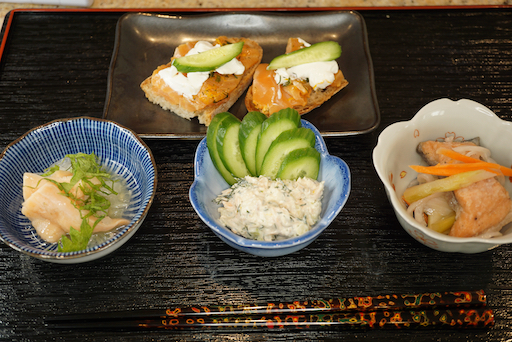It was a mellow relaxing New Year's day. My wife wanted to see the first sunset of the year at our sunset gazing spot in our house. First rate sunset admiration requires food and libation. Rather than carrying up many plates and bowls, however, I came up with the idea of using stackable "Tsugaru-nuri" 津軽塗り Japanese lunch box which my friend gave me many years ago.
Although we were ready to dig into our Sushi-taro osechi box 寿司太郎御節箱, I started with what I made, which, to my surprise, mostly filled the boxes. I only added shiitake-umani 椎茸旨煮 and "fu" gluten cake 梅麩 from the Sushi-taro osechi box. For the occasion, I used "Hagoita 羽子板*"-shaped chopstick pillows or "hashi oki" 箸置き.
*Hagoita is a racket for Japanese badminton-like game which was traditionally played in New Year. Now, almost nobody plays the game and "hagoita" rackets are a purely decorative item for New Year, there are special "ichi" or markets before the New Year which specialize in decorative "hagoita".
Recipes for most of the dishes I made are posted in the "Norio's New Year's Dishes" tab in this blog. #1=Salmon kelp roll 鮭の昆布巻, #2=
salmon "Nanban" 鮭の南蛮, #3=Russian marinaded salmon 鮭のロシア漬, #4=Date-maki omelet roll 伊達巻き, #5=chicken patty with dried fig and Gorgonzola cheese いちじくとガルゴンゾラチーズの松風焼き (I garnished with my
figgy cranberry sauce), #6="Matsukaze-yaki" chicken patty with pine nuts, 松風焼き#7=simmered shiitake mushroom 椎茸旨煮 and "fu" gluten cake 梅麩 (these are from the osechi box), #8=blanched green asparagus with mayo-sesame paste-soy sauce アスパラの胡麻マヨ, #9=Thinly sliced rib roast with wasabi/horseradish Greek yogurt sauceローストビーフ, and #10=
spicy tofu cubes ぴり辛豆腐.
After watching the sun set, we came back downstairs and hit the osechi box. The picture below is the top layer. We were excited to find "Karasumi 唐墨" Japanese
bottarga. As usual, the box is packed with goodies.
Here is the close up of sun-dried karasumi 天日干し唐墨.
The picture below is the bottom layer.
This is the plate I prepared from the osechi box. I served the karasumi slightly heated in a toaster oven and sandwiched between thinly sliced daikon. The other items are ginko nuts 炒り銀杏, pickled flower-cut lotus root 花輪蓮根, steamed "uni" sea urchin 蒸し雲丹, caramelized small shrimp "Tsuyani" 小海老艶煮 and grilled Japanese "Madai" snapper with Japanese pepper tree leave/miso or "kinome" sauce 真鯛木の芽焼き. I also heated up the fish in the toaster oven. Some items especially grilled fish are best enjoyed heated up slightly to take off the chill of cold. Karasumi is, of course, our favorite and we started with cold sake we brought from Japan on the last trip there.
Here is the close up of all the items which go so superbly with sake.

The sake we opened was the limited edition,
"extra premium Jurakudai" daiginjou from Sasaki-shuzou in Kyoto 聚楽第大吟醸エキストラプレミアム, 佐々木酒造、京都. It was brewed from Yamada Nishiki 山田錦 milled to 40% and a special artesian well water from the ruin of "Jurakudai" castle
聚楽第跡, hence the name of the sake. All sounded very promising but it was not as impressive as we had hoped. It has all the characteristics of daiginjou sake. Very fruity and it almost tasted slightly sweet which may not have been our favorite type of sake. Since this was bought at the duty-free shop in Narita airport, we did not have a large selection and we did not have any foreknowledge of the sake we were buying. Still, this was an excellent sake, especially with karasumi, uni and grilled fish with kinome sauce. Kinome has such a distinctive flavor you cannot miss. So we were warming up for more goodies and proceeded to make a second plate from the osechi box.
The below are the second plate which included "tarako" cod roe kelp roll 鱈の子昆布巻, flower-cut simmered carrot 梅人参,
sweet simmered chestnut with inner skin 栗渋皮煮,
pickled myouga 酢取茗荷 (new this year), Kumquat in syrup 金柑, simmered sweet fish with roe 子持鮎甘露煮,
herring roe marinaded in miso 数の子味噌漬. I am not sure if snow pea 絹サヤ came from my own or from the osechi box.
Herring roe was very nice with very subtle sweetness.
Japanese sweet fish "ayu" with it's roe was also perfect.
At this point, we were quite full. As a ending dish, we had my fuccacia bread with
Spanish olive oil for dipping.
This was a pretty auspicious way to start the New Year but it's not over yet. There are many more goodies in the osechi box.









